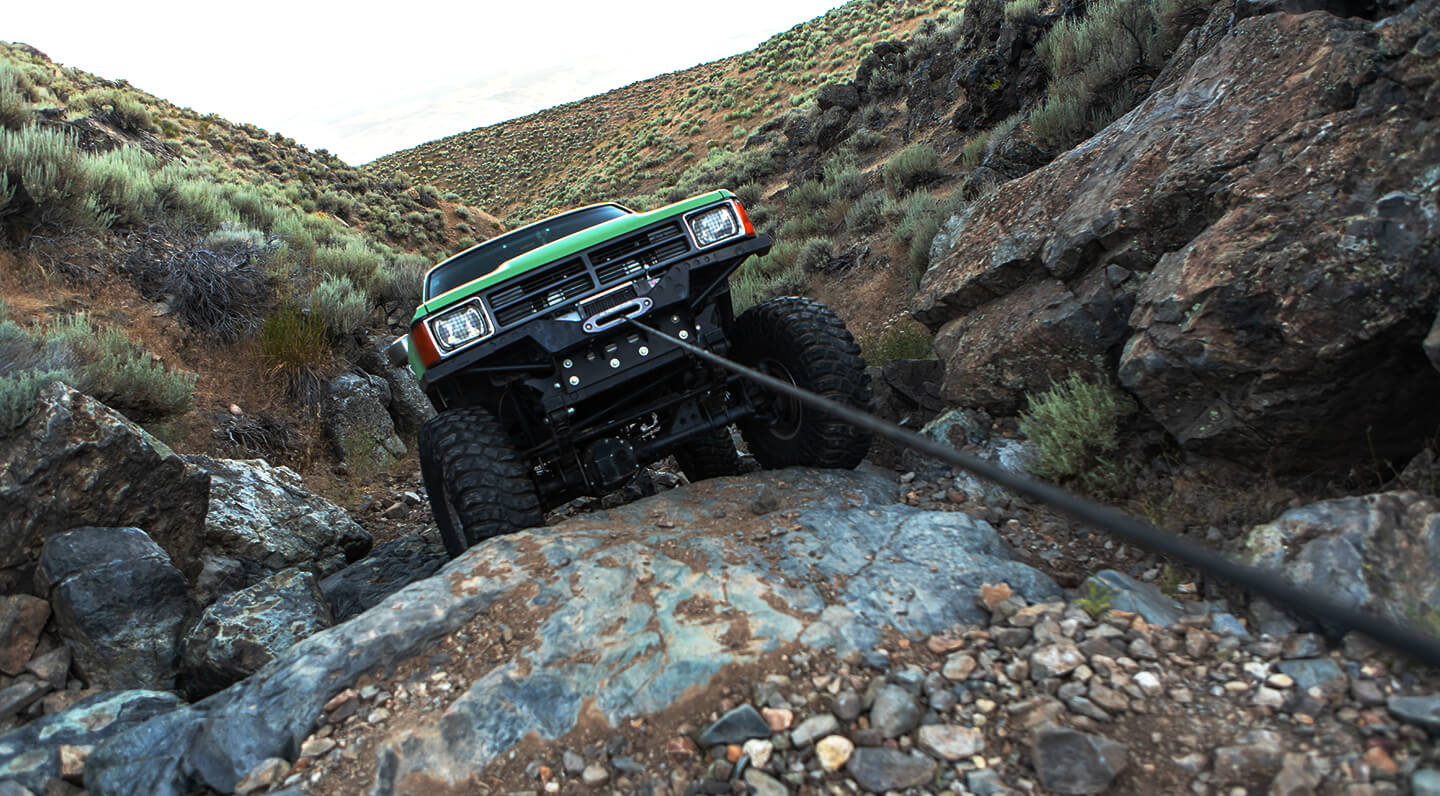
A winch is arguably the best addition you can make to your vehicle to get you out of trouble. Locking differentials will get you further down the trail, big tires provide a lot of traction, but when both of those fail you, a winch can keep you moving. Despite this power, many people on the trail seem to avoid winching at all costs. We have seen far too many people break their vehicles trying to get unstuck. A simple pull from their winch would have solved the issue. Maybe it is ego, perhaps they aren’t familiar with how to use their winch, but regardless of the reason, there is no excuse to avoid using your winch. After all, getting unstuck is why you added it to the front of your vehicle in the first place. Let’s take a look at how to properly and safely use a winch, so you have no excuses not to use one.
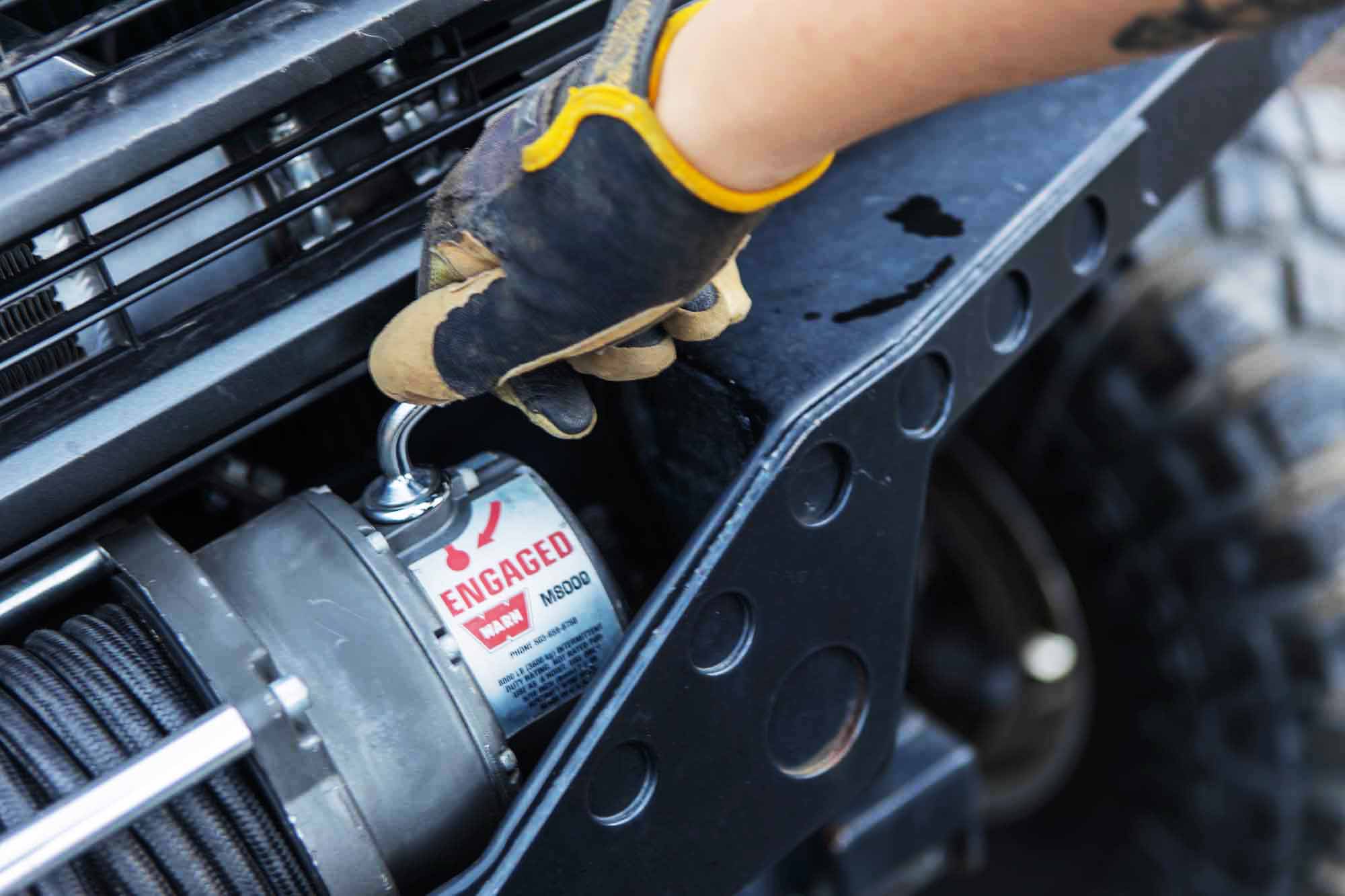
Ever wondered what that lever is on top of the winch? Free spooling the winch drum disengages it from the motor so you can quickly spool the cable out. You will need to reengage the drum though before winching. If you forget to the motor will turn but the drum will not. It usually isn’t a big deal, but if you are in a precarious position, it could be.
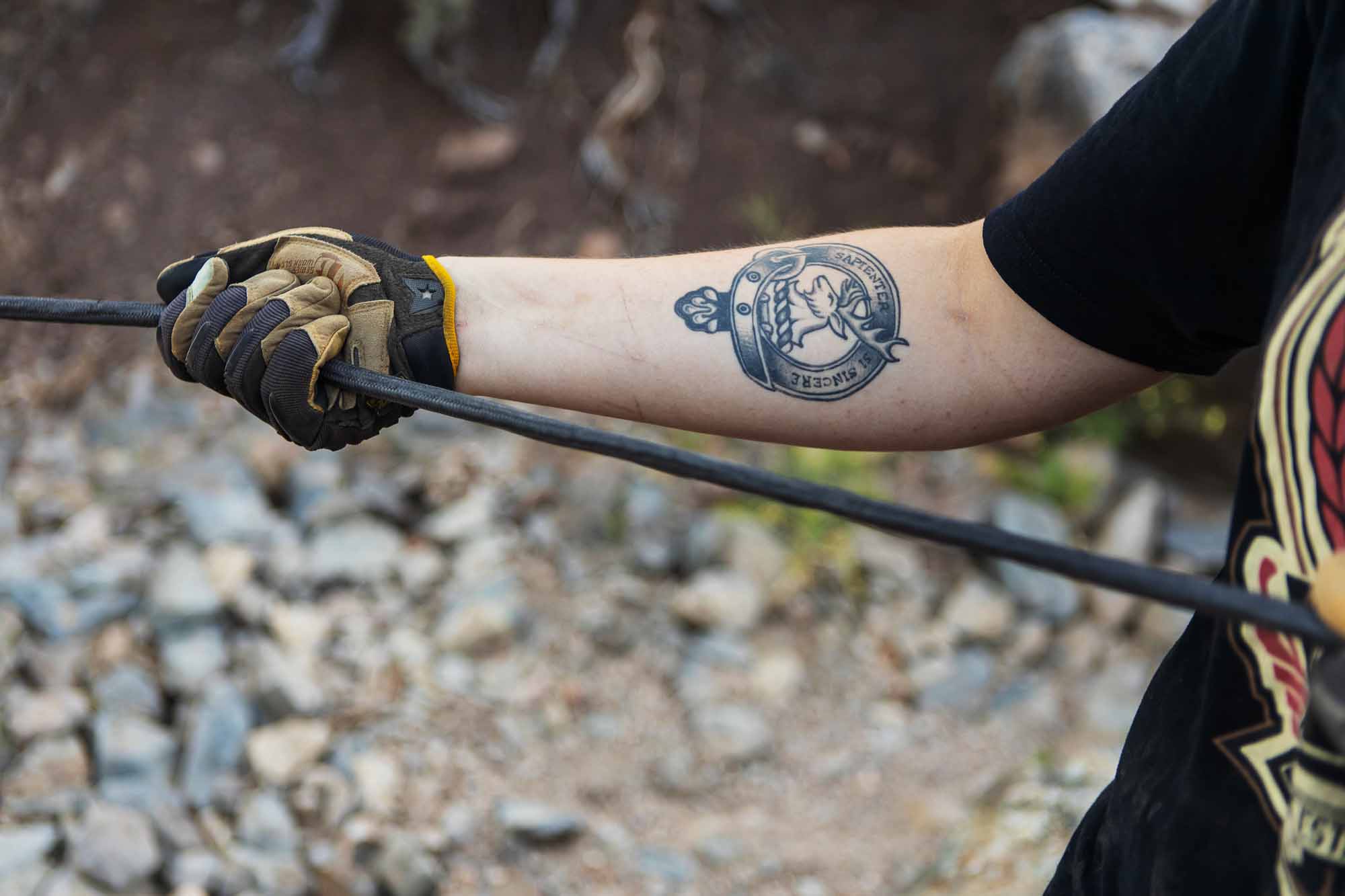
When it comes time to winch, you may find yourself rushing to perform the recovery. But you should never handle a winch cable (even a synthetic one) without gloves. Loose strands from the cable can act as fish hooks that easily tear and rip apart your flesh. For this reason, we recommend that you carry gloves in the door of your vehicle where they are easily accessible at all times.
Assess The Situation
Safety is vital when using a winch. While winches are valuable tools, they can be dangerous due to the huge forces they generate. Something powerful enough to move your stuck vehicle won’t care if your arm or leg is in the way when spooling in. So, when you are stuck take a deep breath, put on your gloves, and start by assessing the situation. Start by determining what you are going to winch to, what other recovery items you will need, and who you want to help. Often on trail rides people, even strangers, are eager to help in any way possible. This eagerness can sometimes cause more issues than it resolves. You should only need a few people to perform a recovery with a winch. Preferably the people who help are ones you know and trust and have wheeled with in the past. Everyone else should stay back beyond the distance that the winch rope is spooled out. That way if the cable should break, it cannot harm them.
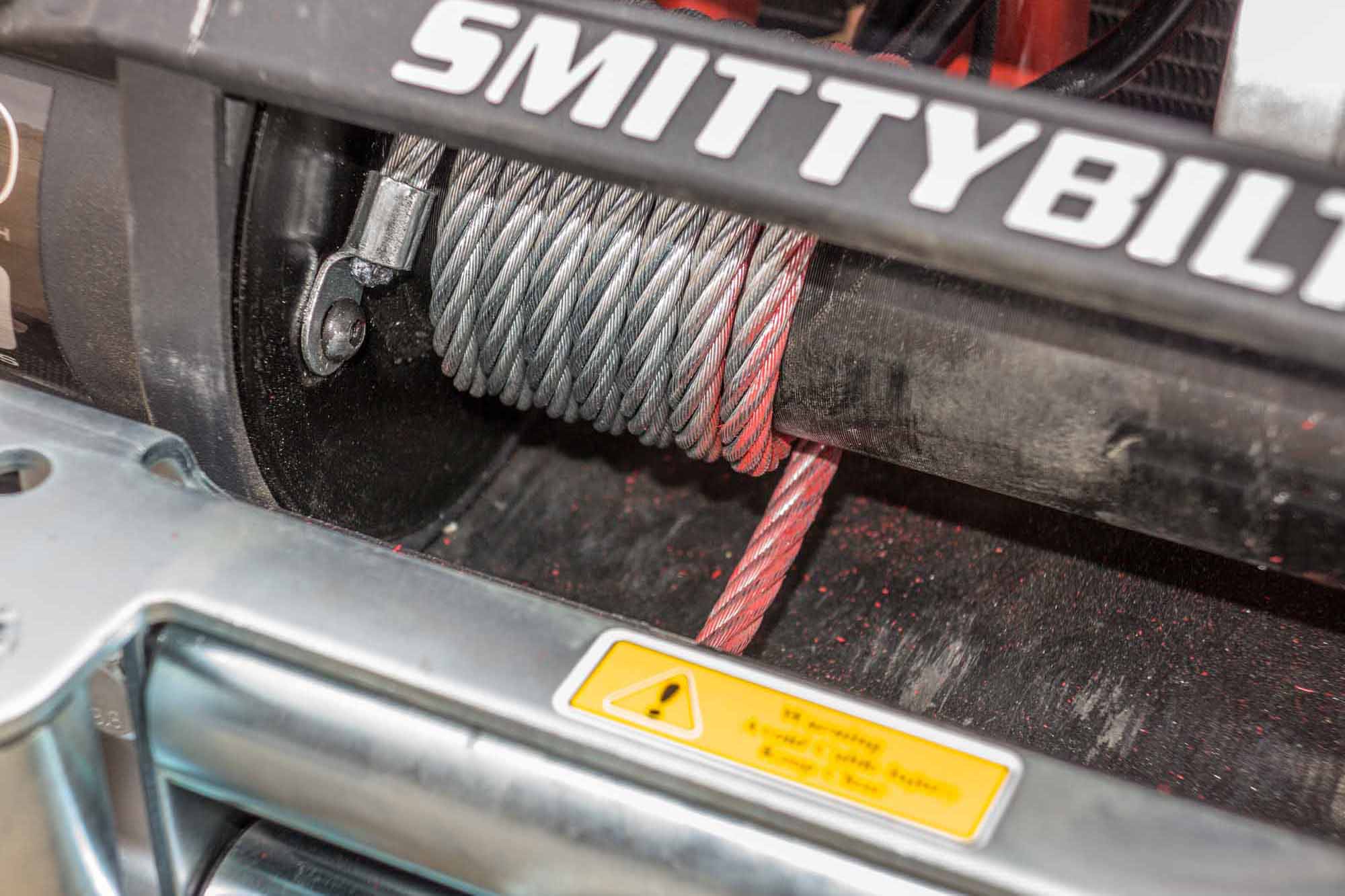
Fewer layers of cable on the winch drum increase the pulling power. But you want to have at least five wraps of cable around the drum to provide friction and keep the cable from coming off the drum. Smittybilt marks the end of their winch lines with red paint, so you have a visible warning when you have spooled out the cable too far.
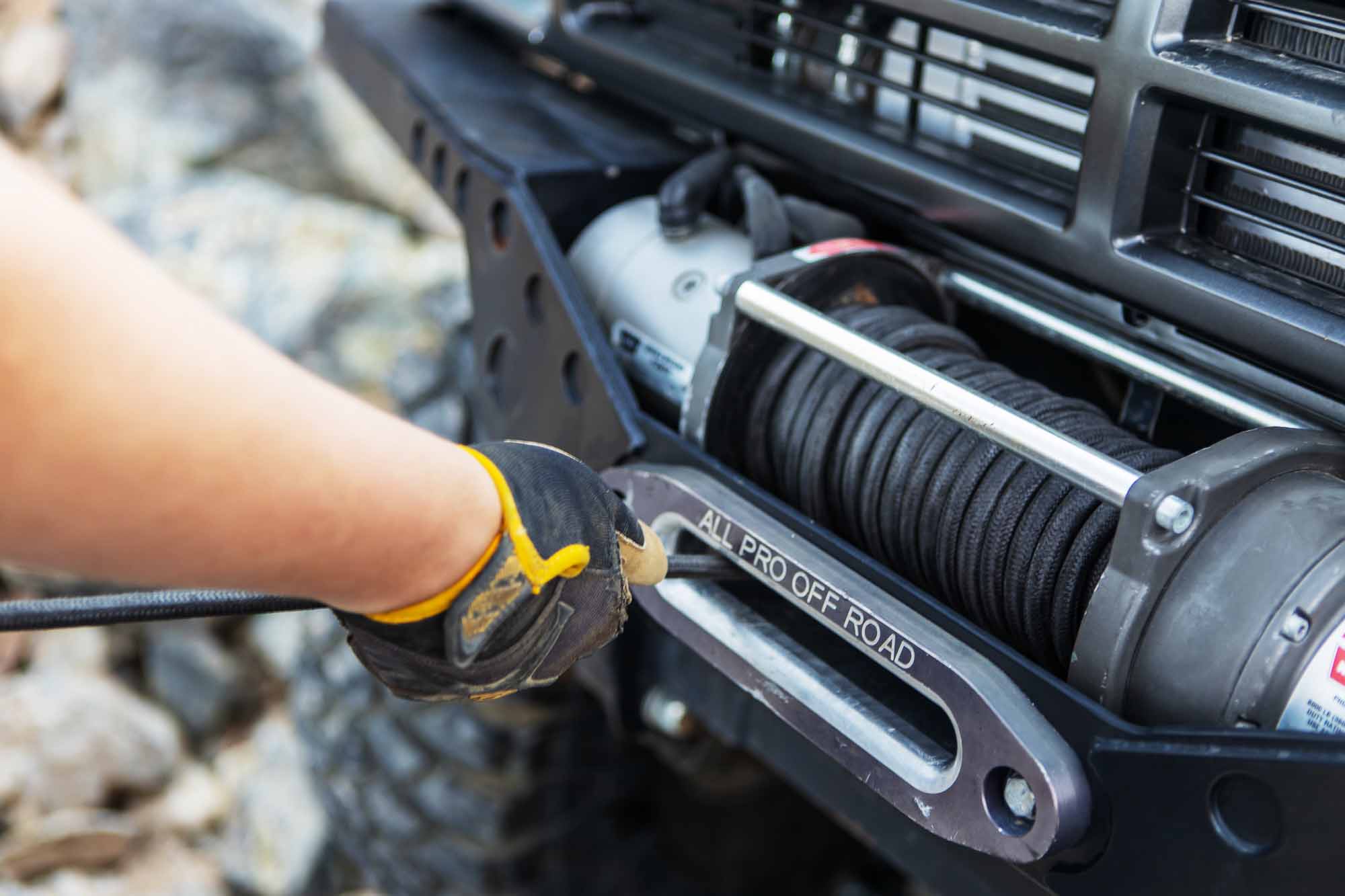
You don’t want your hands to be too close to the fairlead, or you risk having your hand pulled into the winch. Even when you release the winch controller, the motor will briefly continue to turn. Getting your hand sucked into the winch is a bigger concern with steel cable where strands could snag your hand or glove. But it is a good practice to keep your hands away from the fairlead.
What Else You Need
Your winch is the most significant piece of recovery gear with regards to weight, packaging, and price. There are supplemental items you will want to carry with you to ensure that your winch is as effective as possible to get you unstuck. These include, but are not limited to gloves, shackles (also called clevis or d-rings), a snatch block, a tree saver, a tow strap, and a winch damper. If you are hooking onto the rear bumper of your buddy’s rig, you might not need any of these items. If you are trying to recover that same buddy from a rollover in a narrow canyon though, you might need to use every one of those accessories.
What To Winch To
You want to winch to something substantial and heavy enough to allow you to get unmired. If you are on the trail with another vehicle (you don’t wheel alone, right?), it makes sense to winch to that vehicle. That is assuming the rig is similar in size (or larger) to yours, in front of you where it can act as an anchor, and has strong recovery points. If that isn’t the case, you can winch to a tree or a large rock, using your tree saver strap. Ensure that the rock or tree is large enough to support the weight of your vehicle and rooted firmly enough that you will not pull it towards you. If not, you may end up with more problems than just being stuck. Hook the cable as low as possible to minimize the leverage on the anchor.
In the sand or mud, you may need a land anchor such as Smittybilt’s Winch Anchor Support Platform (WASP) when nothing else is available as an anchor point. Ideally, you’ll want an anchor point that will enable you to pull straight in the direction the vehicle will move. A straight pull allows the rope to wind tightly and evenly onto the drum as it is spooled in. An anchor point that is further away may seem like a hassle, but it will provide the winch with its greatest pulling power by taking more wraps of cable off the drum.
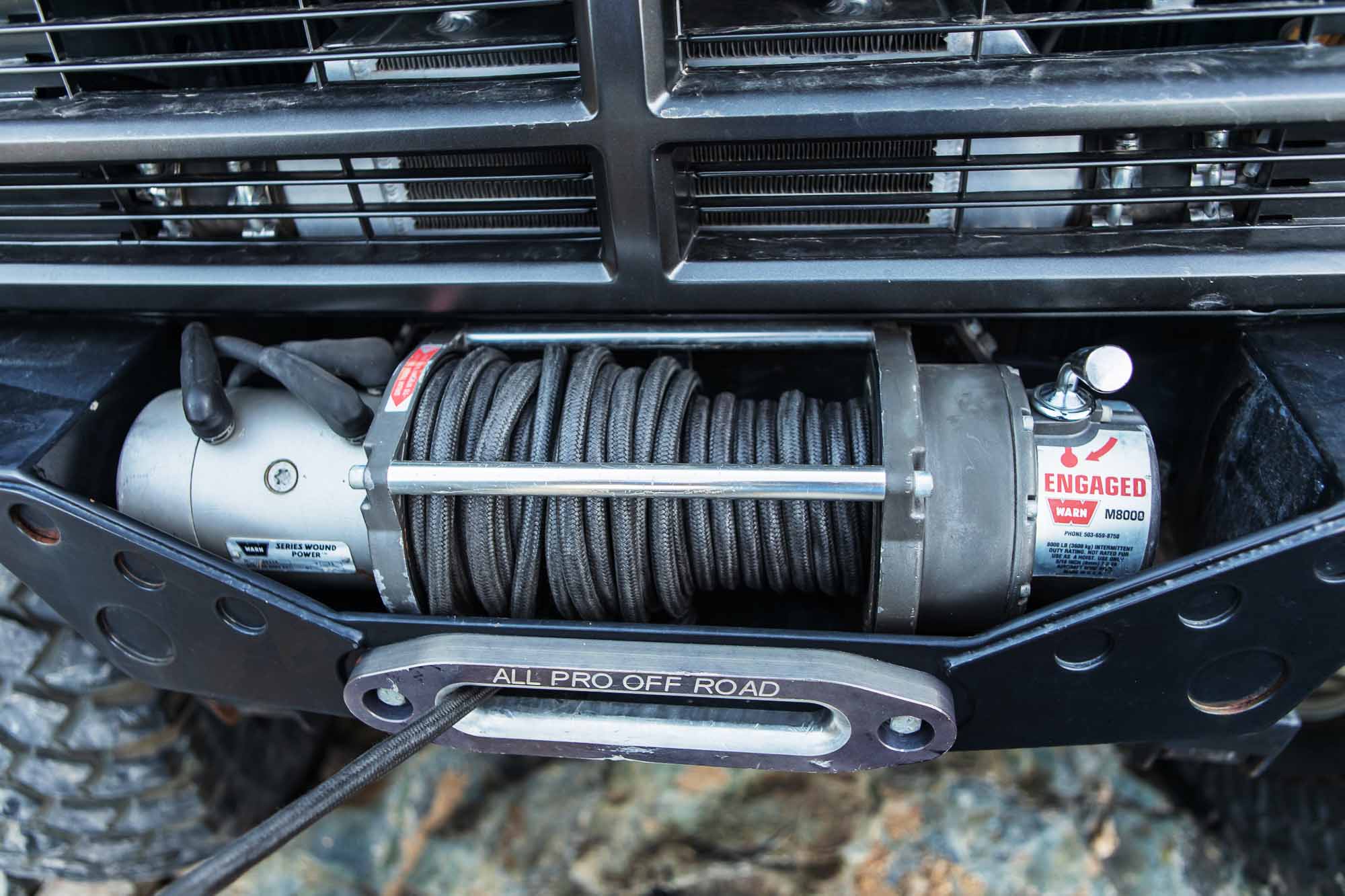
Sometimes you have to winch at an angle. Pulling from the side can cause the cable to bunch up on one side of the drum. The cable could even bind and stall the winch if it contacts the tie bars. After a recovery like this always spool out the cable and rewind it neatly on the drum.
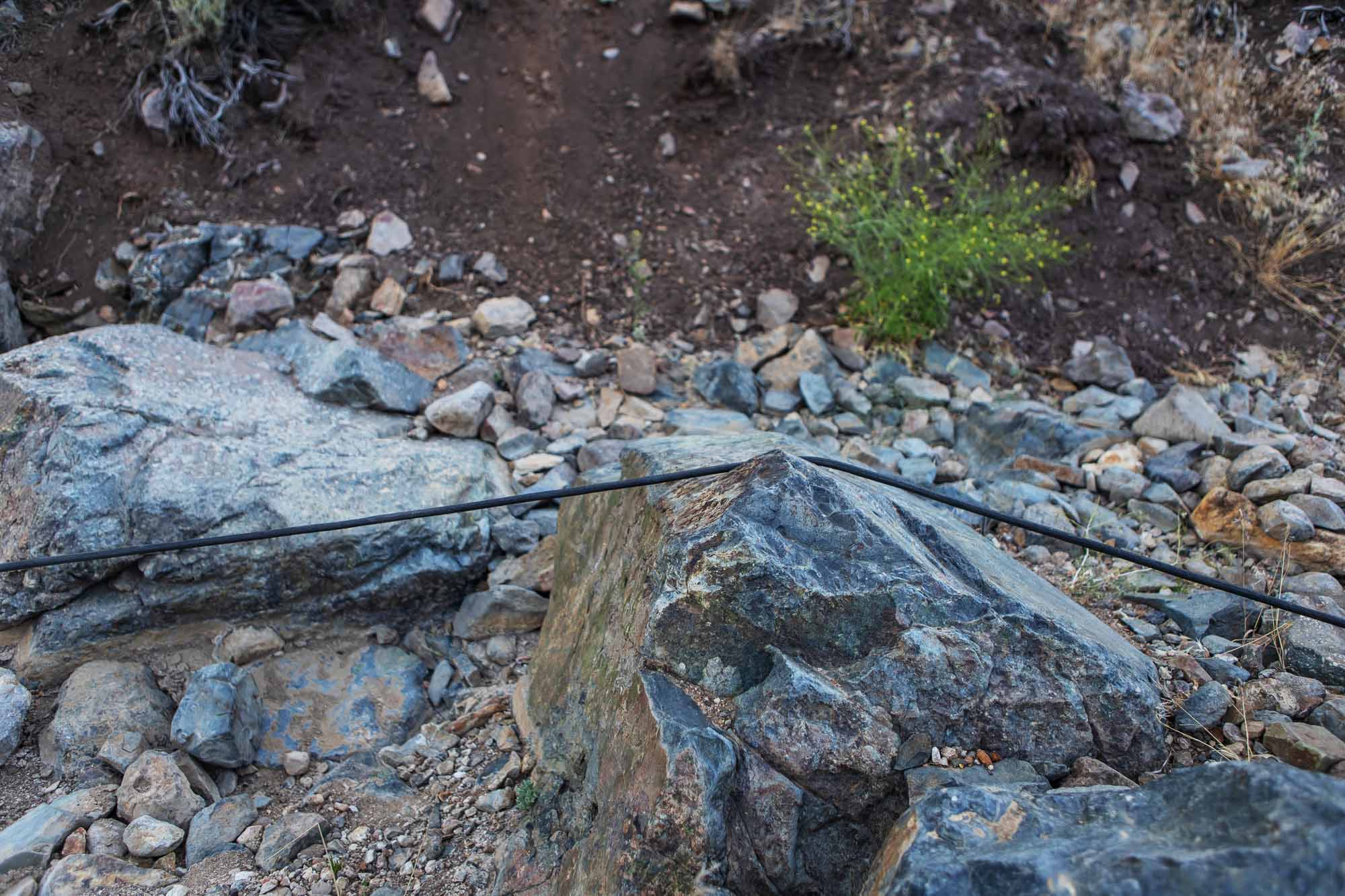
One area where steel cable beats synthetic is abrasion. The new generation of synthetic winch lines are better at resisting abrasion and UV degradation, but they can still be damaged. Most synthetic cables come with a heavy sheath for protection when dragging over rocks in situations like this.
Recovering Yourself
If you are recovering your vehicle, we recommend operating the winch and driving at the same time. While this makes for a busy driver, there are advantages to having one person perform the recovery. Ideally, you want the tires to be moving at the same rate of speed as the winch. This will minimize strain on the winch and also allow you to know when the vehicle is free. If you feel an extreme strain on the vehicle or winch, operating both will enable you to stop and reevaluate the situation. And, in practical terms, the winch controller cable on most winches isn’t long enough to allow someone to operate it safely from next to a moving vehicle. A second person outside of the vehicle is helpful though to spot and act as a second set of eyes from a safe distance.
Recovering Another Vehicle
If your vehicle is recovering another rig, we recommend that you operate the winch from outside of the 4×4 so you can evaluate the situation. If a third person is present, have them engage the brakes on your vehicle. They will be directly in the path of the winch pull, but also don’t necessarily need to see what is happening. Raising your hood will protect them from harm should the winch cable break. It is also worthwhile to have them increase the idle to approximately 2,000 RPM to maximize the alternator’s output back into the charging system. Winches draw an incredible amount of current and also generate a lot of heat. For these reasons, we recommend winching in short spurts if at all possible. Doing so will also allow you to reevaluate the situation and reposition if necessary.
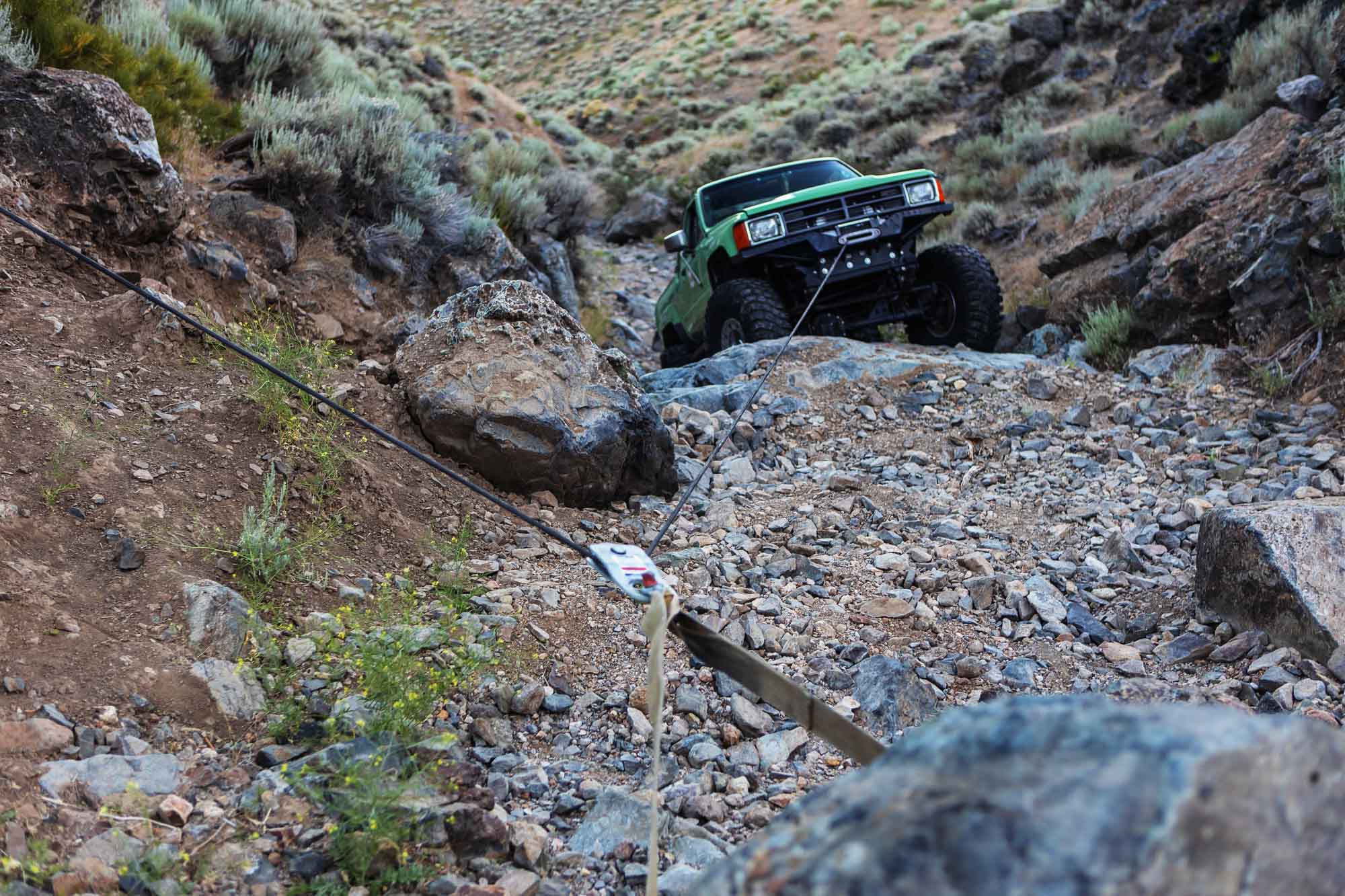
Sometimes you may find yourself in a situation where you cannot get a straight pull. In these instances, a snatch block can be used to change the direction of the pull. Snatch blocks are particularly useful when recovering a rolled vehicle if you need to pull it to the side. In addition to a snatch block, you will need a D-ring and a tree saver strap to change the direction of the pull.
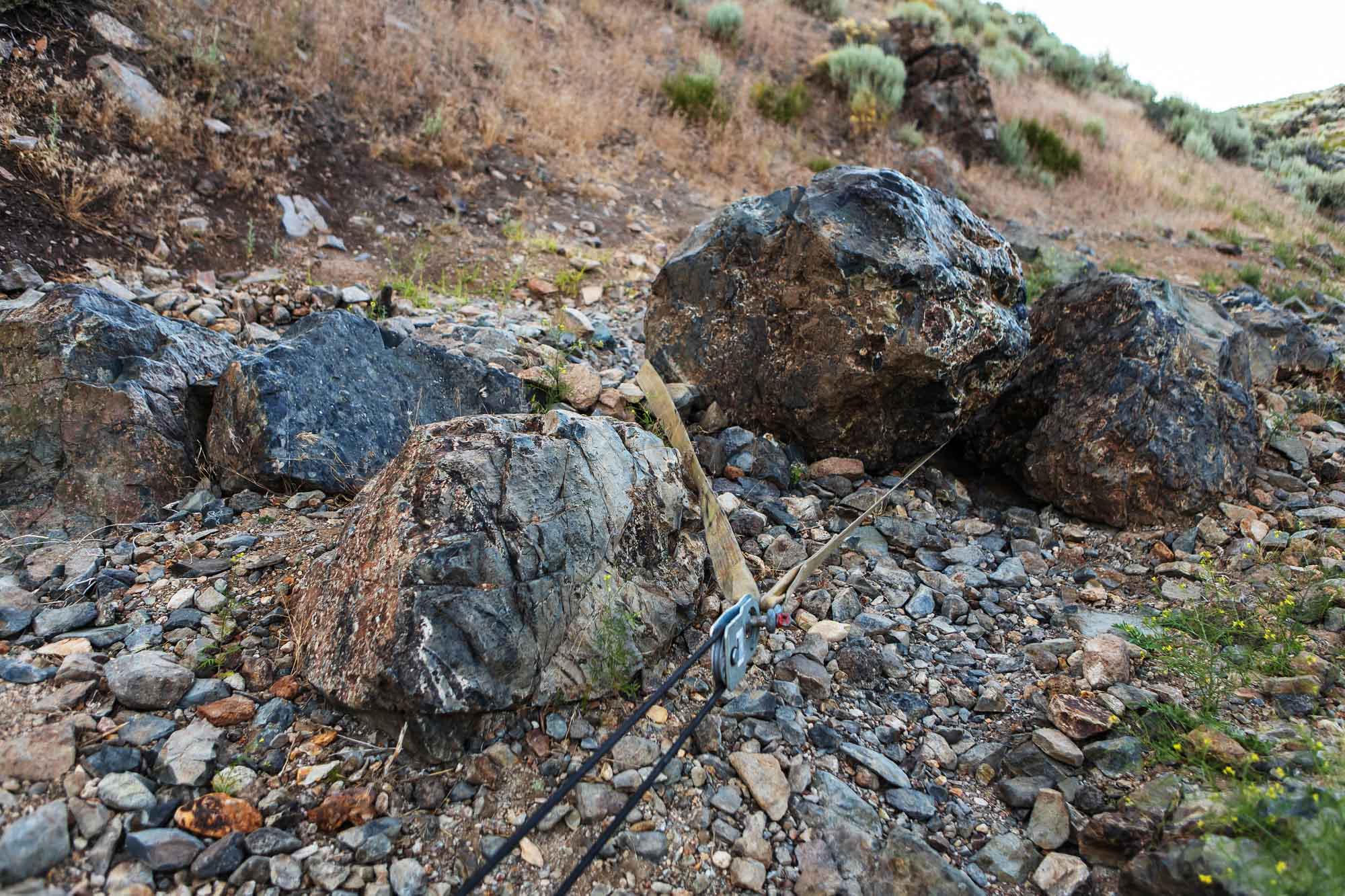
You never want to connect the hook to the cable, or it will kink under load. Also, the cable will cut into the bark of a tree, killing the tree in the process. ARB, Smittybilt, and Warn all offer short recovery straps that will not stretch under load, unlike a kinetic recovery rope. Be careful how you place the strap, or you might not get it back.
What Not To Do
There are arguably more rules on what not to do when you are winching than what to do. Never yank on the winch hook as a recovery point from a dynamic pull with a strap. That is what tow hooks are for. The shock load to your winch could damage the drum and motor. You also never want to hook to suspension or steering components, or wrap the cable around something and attach the hook onto the cable. Doing this can damage the cable or the parts that you are trying to connect to. Again, that is what recovery points are for. And, keep people back away from the winch cable. Never have someone step over the cable, especially while it is under tension, as it risks injury to the person.
If You Only Remember One Thing
If you only remember one thing, it is to take your time when winching. Don’t be in a rush and don’t take any unnecessary risks. Winches are incredibly powerful tools, but that power is indiscriminate. While we did not cover every possible situation here, the goal is to provide you with the critical thinking skills necessary to evaluate the situation you are in and determine how to extract yourself safely. The more you use your winch, including just familiarizing yourself with its functions before actually needing it, the better off you will be when the chips are down.
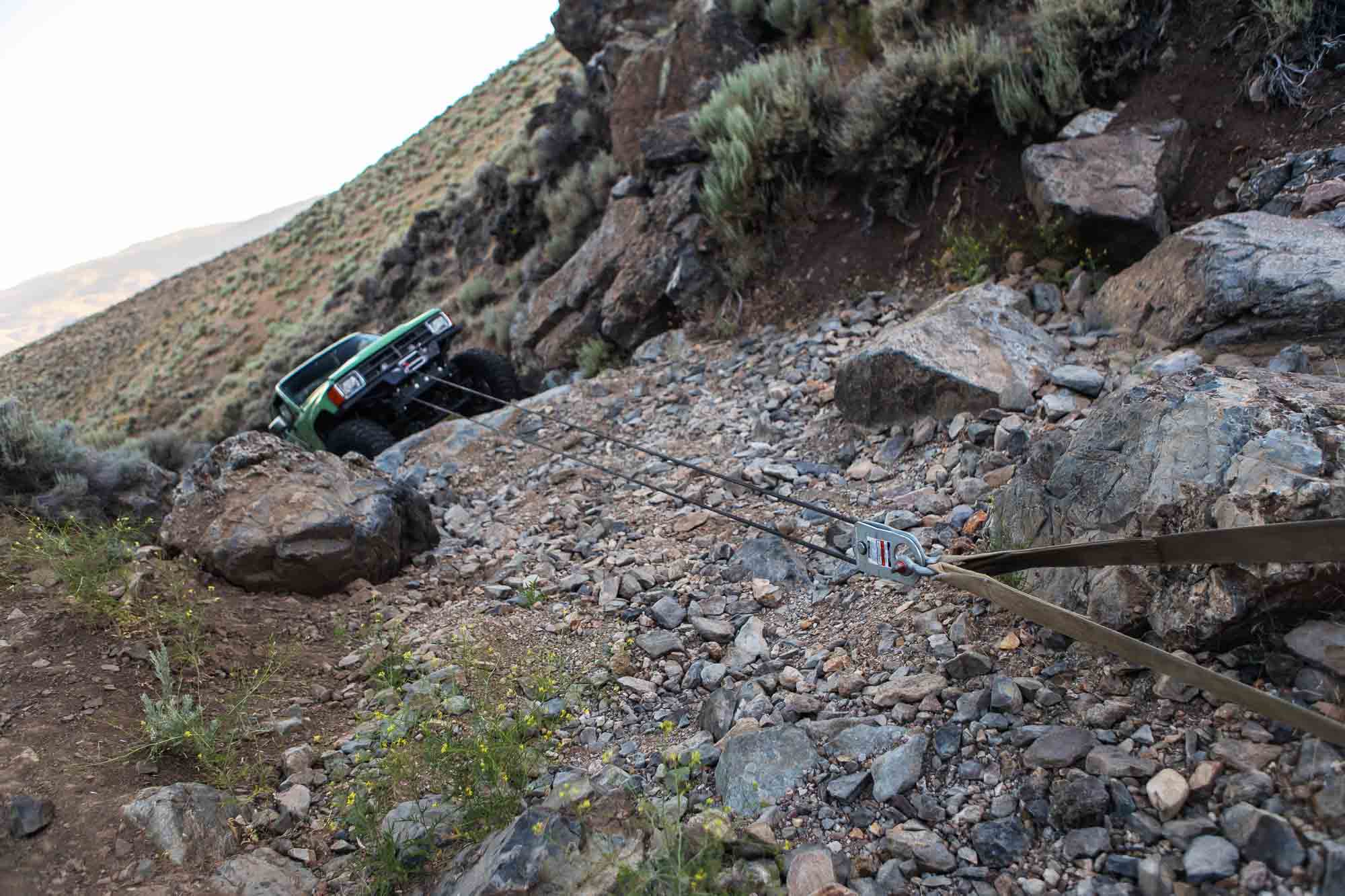
Sometimes even your 10,000-lb. capacity winch won’t be able to pull you out of the situation you find yourself in. Or, perhaps you need to pull another vehicle that is far heavier than your winch can handle. In these situations, you can double the winch with a snatch block. Doing so increases pulling power by increasing the mechanical advantage of the winch and also allowing more cable to be unspooled. ARB, Smittybilt, and Warn all offer snatch blocks that are compatible with both synthetic and steel cable.
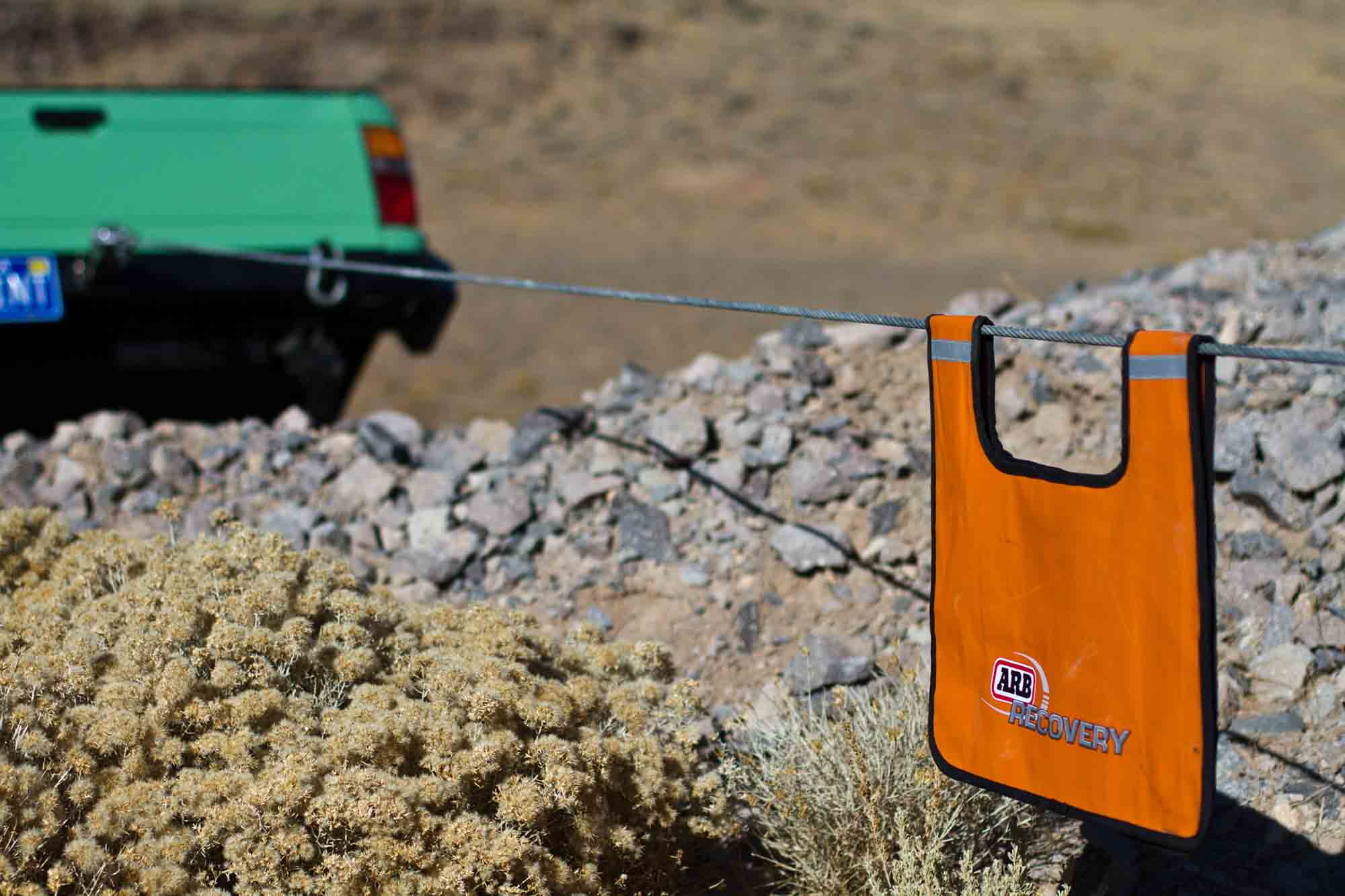
Winch cables, especially steel ones, can store a tremendous amount of energy. It is wise to put weight on the cable that will force it to fall to the ground should the cable break. The weight can be something as simple as a backpack or a floormat, but ARB’s Recovery Damper is a more elegant solution. Manufactured from heavy-duty vinyl with a silver reflective tape for visibility at night and Velcro to reduce slipping, ARB’s Recovery Damper even has pockets to store your gear for added weight.



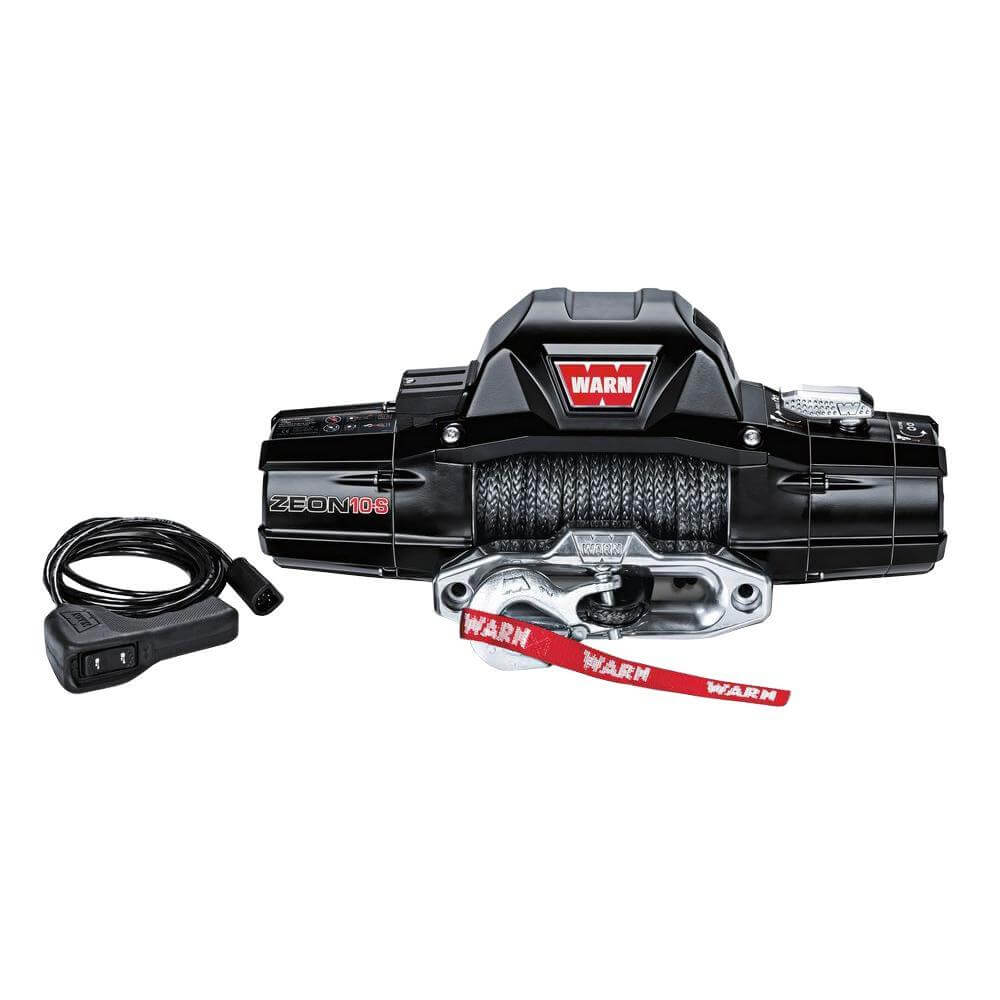
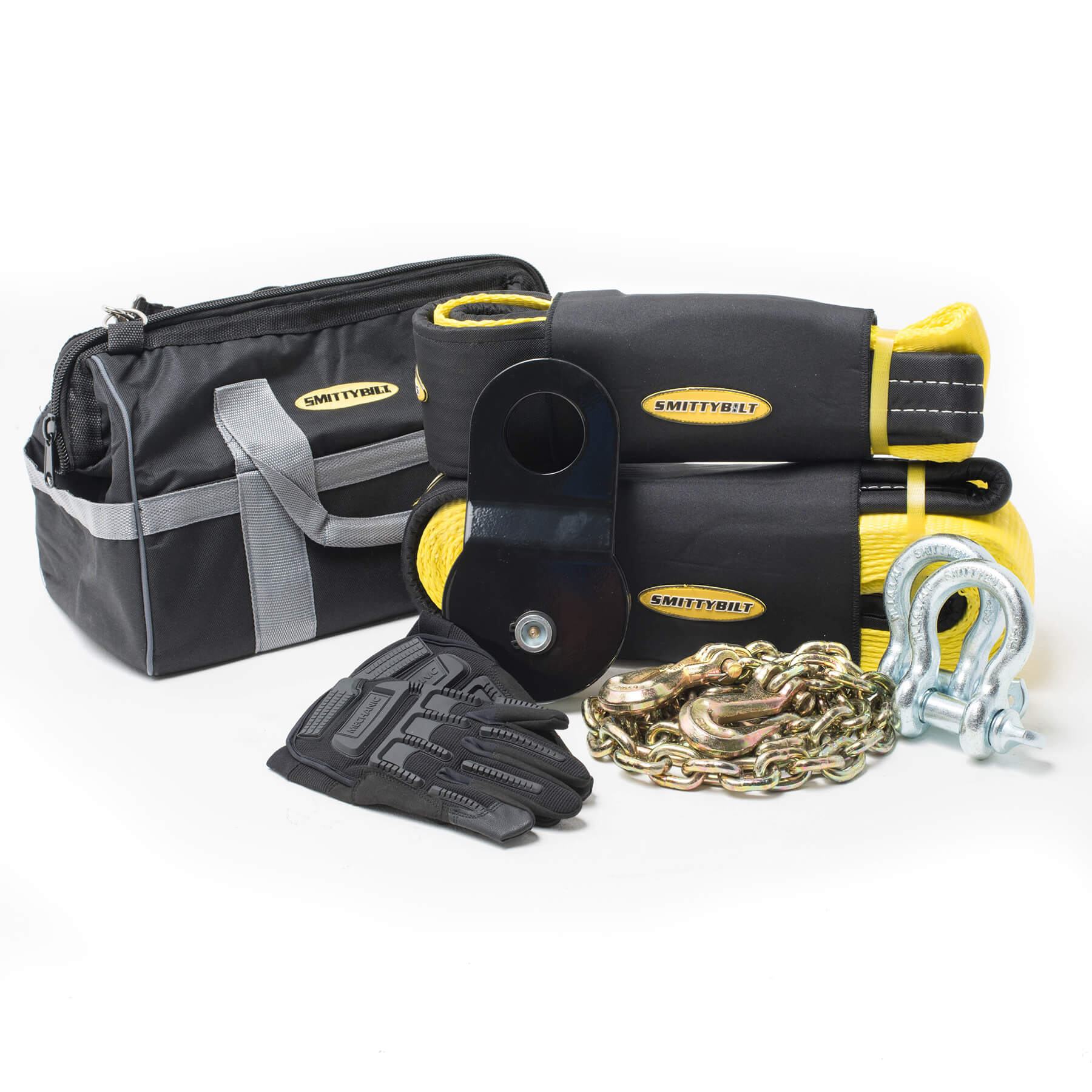
2